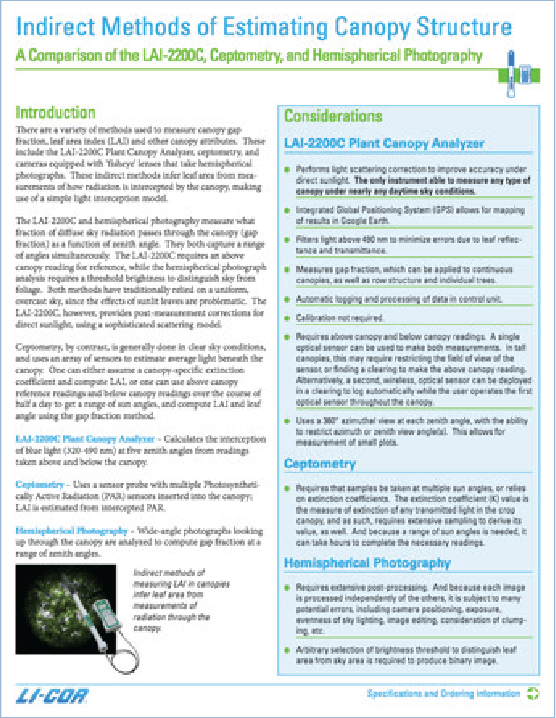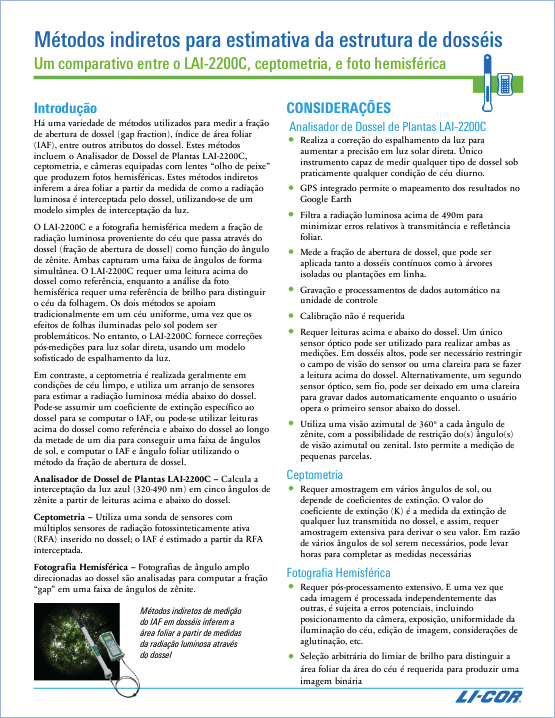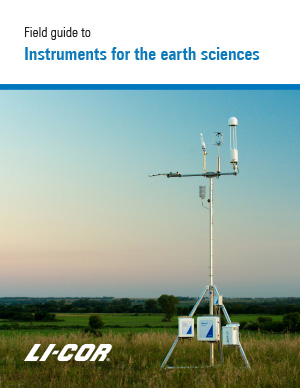Looking for manuals, software, or help with the Plant Canopy Analyzer?
Visit the technical support center for software, operating instructions, videos, and tips.
Protect your research with a LI-COR service agreement or maintenance plan.
Learn more about the benefits and coverage options we offer to keep your instruments protected.
Brochures
Frequently Asked Questions
References
- Bonhomme, R. and Chartier, P. (1972). The interpretation and automatic measurement of hemispherical photographs to obtain sunlit foliage area and gap frequency. Isr. J. Agric. Res. 22:53-61.
- Gower, S.T., and Norman, J.M. (1990). Rapid estimation of leaf area index in forests using the LI-COR LAI‑2000. Ecology, 72(5) 1896-1900.
- Lang, A.R.G., Xiang, Y., and Norman, J.M. (1985). Crop structure and the penetration of direct sunlight. Agric. & For. Meteor. (35) 83-101.
- Perry, S.G., Fraser, A.B., Thomson, D.W., and Norman, J.M. (1988). Indirect sensing of plant canopy structure with simple radiation measurements. Agric. and For. Meteor. (42) 255-278.
- Pierce, L.L. and Running, S.W. 1988. Rapid estimation of coniferous forest leaf area index using a portable integrating radiometer. Ecology 69(6) 1762-1767.
- Walker, G.K., Blackshaw, R.E., and Dekker, J. (1988). Leaf area and competition for light between plant species using direct sunlight transmission. Weed Technology (2) 159-165.
- Warren Wilson, J., and Reeve, J.E. 1959. Analysis of the spatial distribution of foliage by two-dimensional point quadrats. New Phytol. (58) 92-101.
- Welles, J.M. (1990). Some indirect methods of estimating canopy structure. In: Instrumentation for Studying Vegetation Canopy for Remote Sensing in Optical and Thermal Regions. (eds. N.S. Goel and J.M. Norman). Remote Sensing Reviews. 5(1) pp. 31-43.
- Welles, J.M. and Norman, J.M. (1990). An instrument for indirect measurement of canopy architecture. Agronomy J., 83:818-825.



